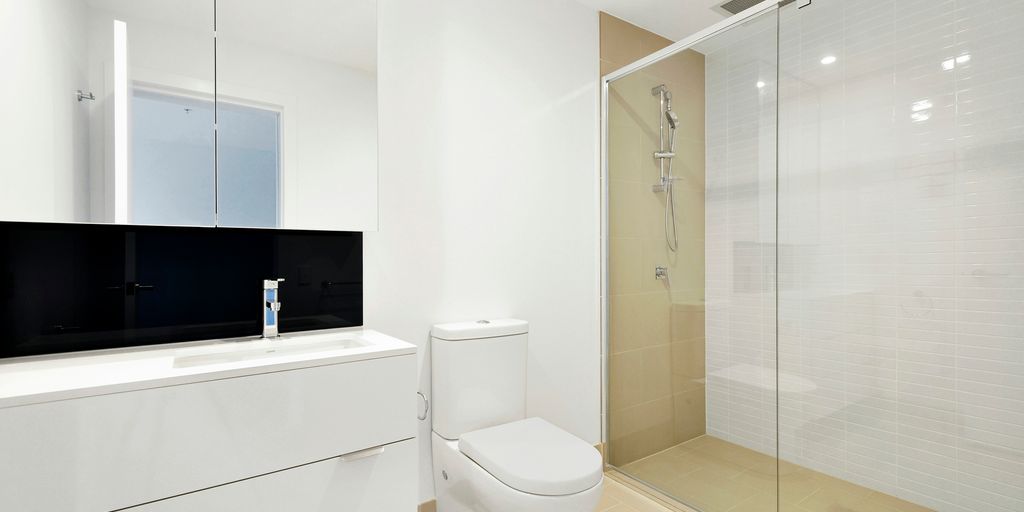Understanding the Difference Between Yurt and Bell Tents: A Comprehensive Guide
When it comes to outdoor living, choosing between a yurt and a bell tent can be tricky. Both options have their own unique features and benefits, making them suitable for different camping experiences. This guide will help you understand the key differences between these two types of tents, so you can make an informed decision based on your needs.
Key Takeaways
- Bell tents have a dome shape supported by a central pole, while yurts have a rounded structure with a wooden frame.
- Setting up a bell tent is usually quicker and easier than a yurt, making it better for short trips.
- Yurts are built to last longer and can handle various weather conditions, making them ideal for extended stays.
- Generally, bell tents are cheaper and come in many sizes, while yurts can be customised but are more expensive.
- Bell tents offer more space for families or groups, whereas yurts provide a cosy atmosphere for a smaller number of people.
Exploring the Origins of Yurts and Bell Tents
Historical Significance of Yurts
Yurts have a fascinating history that dates back thousands of years, originating in Central Asia. These portable homes were primarily used by nomadic tribes like the Mongols, who needed a reliable shelter that could withstand the harsh climates of the steppes. Yurts are a testament to human ingenuity, providing warmth in winter and ventilation in summer. Their design has remained largely unchanged, showcasing their effectiveness and durability over time.
The Evolution of Bell Tents
On the flip side, bell tents have a unique backstory. They were initially used by the British Army in the 19th century, designed for quick setup and spacious interiors to accommodate multiple soldiers. Over time, these tents transitioned from military use to recreational camping, becoming popular for glamping. Interestingly, the concept of glamping can be traced back to luxurious tent-living during the 16th century, like the diplomatic summit between Henry VIII and Francis I.
Cultural Context and Usage
Both yurts and bell tents have evolved to fit various cultural contexts. Yurts are often associated with nomadic lifestyles, while bell tents have become synonymous with modern camping experiences. Today, they are both used for different purposes, from family camping trips to luxurious glamping retreats.
| Tent Type | Origin | Primary Use |
|---|---|---|
| Yurt | Central Asia | Nomadic living |
| Bell Tent | British Army | Recreational camping |
In summary, understanding the origins of these tents helps us appreciate their unique characteristics and the roles they play in our outdoor adventures!
Structural Characteristics of Yurts and Bell Tents
When it comes to the structural characteristics of yurts and bell tents, there are some key differences that make each unique.
Design and Framework Differences
Yurts have a circular design with a sturdy wooden frame, while bell tents are conical and supported by a single central pole. This means that in a bell tent, the main support structure is a single pole at the centre, supported by guy lines extending from the sides. This design allows for a spacious interior but can be less durable in harsh weather compared to the more complex structure of a yurt.
Materials Used in Construction
The materials used also vary significantly. Yurts often utilise natural materials like wood and felt, making them eco-friendly and durable. In contrast, bell tents are typically made from heavy-duty canvas, which is both waterproof and breathable. This ensures comfort during camping trips, but they may not hold up as well in extreme conditions.
Space Utilisation and Layout
Both tents offer spacious interiors, but their layouts differ. Yurts generally have a more open floor plan, allowing for better space utilisation. Bell tents, while spacious, have walls that slope inward, which can limit usable space near the edges.
| Feature | Yurts | Bell Tents |
|---|---|---|
| Shape | Circular | Conical |
| Support Structure | Wooden frame | Central pole |
| Materials | Wood, felt, canvas | Heavy-duty canvas |
| Space Utilisation | Open floor plan | Sloping walls |
Understanding these structural differences can help you choose the right tent for your needs. Whether you prefer the durability of a yurt or the simplicity of a bell tent, knowing what each offers is essential for a great camping experience!
Assembly and Portability Considerations
Ease of Setup for Each Tent
When it comes to setting up, I find that bell tents are a breeze. They’re super easy to put up and take down, which is perfect for anyone who loves to move around. You can usually have it ready in no time, and it folds down neatly into a small bag for easy carrying. On the flip side, setting up a yurt takes a bit more time and effort. If you’re planning to relocate often, a yurt might not be the best choice.
Transporting Yurts vs Bell Tents
Transporting these tents is quite different too. Bell tents are lightweight and compact when packed, making them fit easily into most cars. This is great for spontaneous trips! Yurts, however, are bulkier and heavier, which means they require more space and effort to transport. If you’re thinking about a long-term stay, a yurt could be worth the hassle, but for those of us who like to move around, bell tents are definitely the way to go.
Ideal Scenarios for Frequent Movers
- Bell Tents: Perfect for short camping trips, festivals, or weekend getaways.
- Yurts: Best suited for long-term stays in one location, especially if you want a more permanent setup.
In summary, if you’re someone who loves to experience a stylish glamping getaway, the Bell Tent’s ease of setup and portability make it a fantastic choice.
Comparing Durability and Weather Resistance
Long-Term Living with Yurts
When I think about durability, yurts really stand out. They are built to last, using strong materials like wood and steel frames. This makes them perfect for long-term living. Yurts can handle all sorts of weather, from heavy rain to strong winds. They often come with features like rain gutters and snow guards, which help keep them safe and dry.
Short-Term Camping with Bell Tents
On the flip side, bell tents are great for short camping trips. They are made from heavy-duty canvas, which is waterproof and breathable. This means they can keep you dry during a downpour, but they might not be as sturdy as yurts in extreme weather. If you’re just out for a weekend, a bell tent can be a cosy and practical choice.
Weather Adaptability of Each Option
Here’s a quick comparison of how each tent performs in different weather conditions:
| Feature | Yurts | Bell Tents |
|---|---|---|
| Durability | High | Moderate |
| Weather Resistance | Excellent | Good |
| Insulation | Great for all seasons | Basic, may need extra layers |
| Setup Time | Longer | Quick |
In summary, if you’re looking for a long-lasting shelter that can handle tough weather, yurts are the way to go. But if you want something easy to set up for a short trip, bell tents are a solid option!
Cost Analysis and Customisation Options
Price Ranges for Yurts and Bell Tents
When it comes to buying a yurt or a bell tent, the cost can vary widely. Here’s a quick breakdown of what you might expect:
| Type of Tent | Price Range |
|---|---|
| Yurts | £3,000 – £20,000 |
| Bell Tents | £200 – £2,500 |
Customisation Features Available
Both yurts and bell tents offer a range of customisation options. Here are some features you might consider:
- Colour Choices: You can often choose from various colours for the fabric, like grey, army green, or even aqua.
- Add-Ons: Think about extra windows, skylights, or additional doors to enhance your experience.
- Insulation Packages: Some companies provide insulation options for colder climates, which can be a game changer.
Budget-Friendly Choices for Campers
If you’re on a tight budget, here are a few tips:
- Consider Used Options: Look for second-hand tents that are still in good condition.
- DIY Kits: Some companies offer DIY kits that can save you money on assembly.
- Sales and Discounts: Keep an eye out for seasonal sales or discounts from manufacturers.
When planning your purchase, it’s essential to balance your desired features with your budget.
In conclusion, whether you’re leaning towards a yurt or a bell tent, understanding the costs and customisation options can help you make the best choice for your camping adventures!
Usage Scenarios for Yurts and Bell Tents

When it comes to choosing between yurts and bell tents, it’s all about how you plan to use them. Both options have their own unique perks that cater to different needs. Let’s break it down!
Best Uses for Bell Tents
- Camping Trips: Bell tents are perfect for short camping trips. They’re lightweight and easy to set up, making them ideal for a weekend getaway.
- Festivals: If you’re heading to a festival, a bell tent can provide a comfy space to relax after a long day of fun.
- Family Outings: With plenty of space, bell tents can accommodate families or groups, allowing everyone to enjoy the great outdoors together.
Ideal Situations for Yurts
- Long-Term Living: If you’re thinking about living in a tent for a while, yurts are the way to go. They’re sturdy and can handle various weather conditions, making them suitable for extended stays.
- Glamping: Yurts offer a more luxurious experience, perfect for glamping. You can add furniture and amenities to create a cosy home away from home.
- Workshops or Retreats: Yurts can serve as unique spaces for workshops or retreats, providing a peaceful environment for creativity and relaxation.
Family vs Solo Camping Experiences
- Family Camping: Bell tents are great for families due to their spacious interiors. You can fit everyone comfortably, and they’re easy to pack up and move.
- Solo Camping: If you’re camping alone, a yurt can provide a more intimate and private space. It’s a lovely way to connect with nature while enjoying some comfort.
In summary, whether you’re after a quick camping trip or a long-term stay, both yurts and bell tents offer unique experiences that can cater to your needs.
So, when deciding between the two, think about how you plan to use your tent. This will help you choose the best option for your adventures!
Comfort and Amenities in Yurts and Bell Tents
Interior Space and Layout
When it comes to space, both yurts and bell tents have their perks. Yurts usually have a circular shape, which makes the inside feel roomy and open. This is great for families or groups who want to hang out together. On the flip side, bell tents come in different sizes. For example, our 5m family bell tents are an excellent option. They come equipped with a comfortable double bed and two single mattresses, complete with bedding and towels. This means you can have a good night’s sleep without any hassle!
Comfort Features and Furnishings
Comfort is super important when camping. Yurts often have proper beds and even wood-burning stoves, making them feel more like a home. Bell tents, while simpler, can also be made comfy. You can add rugs, cushions, and even small furniture to make it feel inviting. The flexibility of bell tents allows you to create a space that suits your style and needs.
Creating a Homely Atmosphere
Both options can be personalised to create a warm and welcoming environment. Here are some ideas to make your tent feel like home:
- Add fairy lights for a magical touch.
- Use colourful throws and cushions for comfort.
- Incorporate plants to bring a bit of nature inside.
Whether you’re planning a weekend getaway or an extended stay, both yurts and bell tents offer a comfortable and spacious environment to enjoy the great outdoors.
Yurts and bell tents offer a unique blend of comfort and charm, making them perfect for a relaxing getaway. With cosy interiors and essential amenities, they provide a delightful escape from the everyday hustle. If you’re curious about how to enjoy a stay in one of these lovely structures, visit our website for more information and to book your adventure today!
Conclusion
In summary, both bell tents and yurts have their own special features that cater to different camping needs. Bell tents are great for short trips because they are easy to set up and move around. They offer a stylish and comfortable space for families or friends. On the other hand, yurts are built to last and are perfect for longer stays. They can handle tough weather and provide a unique living experience. By knowing the differences between these two types of tents, you can choose the one that fits your outdoor adventures best. Whether you go for the charming bell tent or the sturdy yurt, you’re sure to have a wonderful time in nature.
Frequently Asked Questions
What distinguishes a yurt from a bell tent?
The main difference is in their structure. A bell tent is a dome-shaped tent supported by a central pole, while a yurt has a rounded design with a wooden frame.
Which tent is better for long-term living, a yurt or a bell tent?
Yurts are generally better for long-term living because they are more durable and can handle different weather conditions.
How easy is it to set up a bell tent compared to a yurt?
Setting up a bell tent is usually much easier and quicker than a yurt, making it ideal for those who move around often.
Can you move a yurt easily?
No, yurts are bulkier and heavier, making them less suitable for frequent relocation compared to bell tents.
Are bell tents more affordable than yurts?
Yes, bell tents are generally cheaper, with prices ranging from £500 to £1,500, while yurts can cost between £3,000 and £10,000.
What comfort features can you find in yurts and bell tents?
Yurts often have better amenities like beds and stoves, while bell tents can be personalised with rugs and furniture to enhance comfort.





